|
|
Expedition
Expedition | People
|
Log - July-31-2003
by Gerhard Behrens and Robert McCarthy
Previous | Next
Cameras
Robert McCarthy |
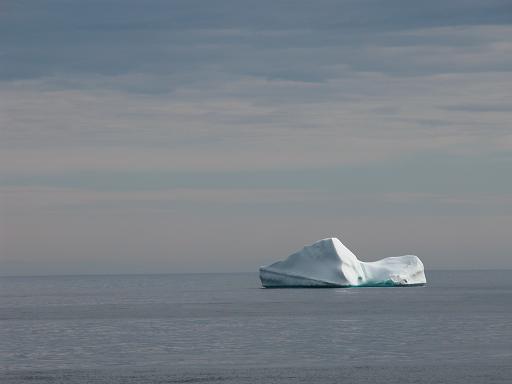 |
Last night Lee Narraway gave a talk on photography. I mentioned yesterday how Lee learned the “art” of photography by experimentation. Well, she also knows the “science” of photography too. Her talk was mostly about how to take better pictures by critiquing digital photos that people onboard sent to her. I think EVERYBODY in attendance learned something from her comments. That’s another benefit of being a teacher, always learning new things. The same holds true for a lot of other professions, but teachers must be role models of life-long learners. The major question high school teachers hear is, “why do we need to know this?” And quite frankly, most of my students don’t need to know all the formulas and “laws” I teach them. But understanding how things work and being able to ask new questions is a skill I’m also teaching. Teaching them problem solving skills employers are looking for and they will use for the rest of their lives is equally as important as the physics. (But really, who doesn’t love physics?) |
| So today, I want to give a brief explanation of how a camera takes a picture. The lens is convex (converging), so the light coming in from the object is bent through the focus point of the lens. Between the lens and the focal point of the lens is the aperture. This is a variable opening that limits the light reaching the shutter. The shutter is past the focal point but before the film. Through the lens viewing cameras have a diagonal mirror on the shutter. This way, you look in the viewfinder and with the use of two diagonal mirrors, you essentially see your object the way the film will “see-it”. When you click the shutter release, the mirror flips up out of the way and the light exposes the film. Notice that the image is upside down and much smaller on the film. It is upside-down because the rays cross over at the focal point of the lens. |
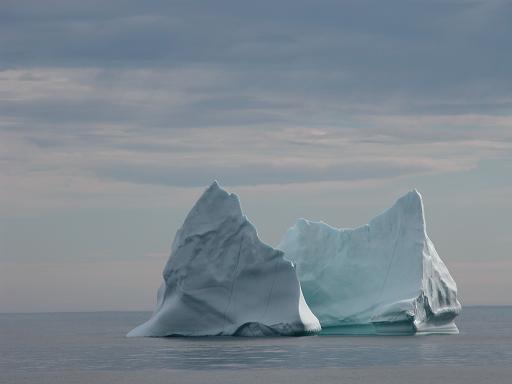 |
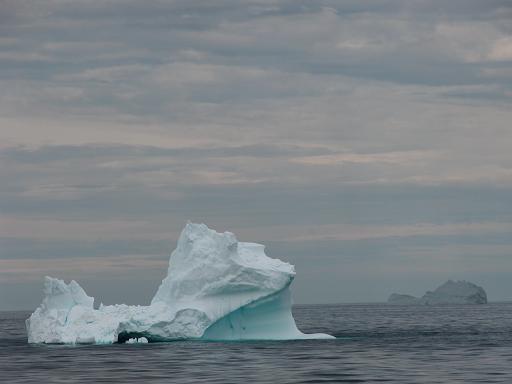 |
When you focus on the object, you are changing the distance from the focal point of the lens to the film. This is accomplished by moving the camera lens slightly. The farther away your object is located, the closer the lens needs to be to the film. For an “infinite” object, the film is at the focal point of the lens, and the camera is as compact as it can be. For an object close to you, you need to extend the lens out away from the camera body, because the image distance (the distance from the lens to the film) must increase. |
| Different lenses have different focal lengths. The greater the focal length, the more the object is “zoomed-in”. The greater the aperture opening (designated by f-stops), the more light gets in to expose the film. Thus you need a fast shutter speed, so not to overexpose the film. An f-stop of 2.8 is a large opening. This is good for fast action shots, where you want to freeze the motion. Conversely, an f-stop of 22 is a very small aperture opening. This is nice if you want the greatest depth of field in focus. Lastly, disposable cameras have a fixed focal length and a fixed aperture size (usually about f-11) to allow a large depth of field, minimizing the need to focus. |
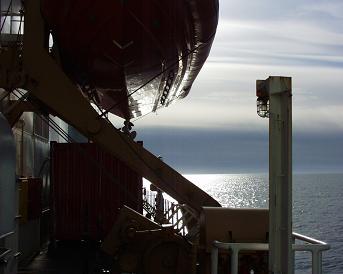 |
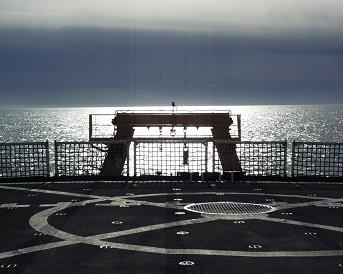 |
Now all we need is subject matter. I think we’ll be looking for walruses when the “clam-team” starts their research, but that’s another day and another story. I’ve included some spectacular digital photographs, mostly from Scott McAulliffe. |
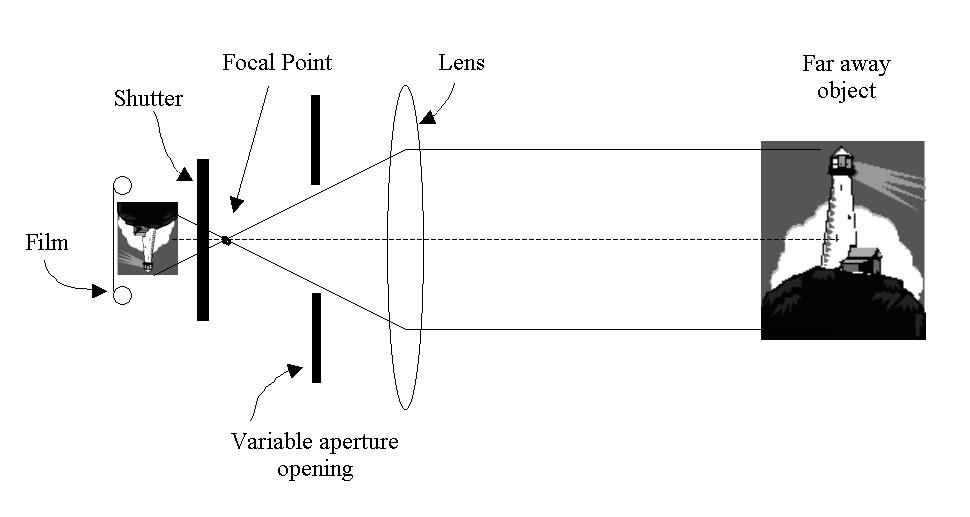 |
Water's fingerprint or signature
Gerhard Behrens |
| Sometimes, students turn in work without their name on the paper. Usually, I know whom it belongs to by the handwriting. Aaron likes cApitAl A’s in the middle of a word, Elizabeth has a big slant, and Peters’ writing is neat, but dark. |
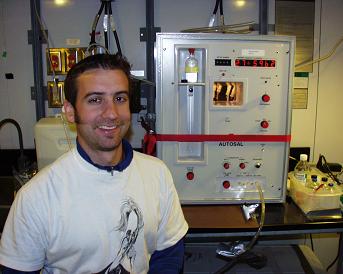
Scott McAullife runs the salinometer, which measures how salty a water sample is. |
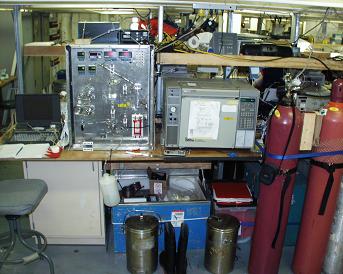
John Harris runs the machine that measures freon, a CFC (chlorofluorocarbon) |
Water is the same way. Using chemistry tools, a scientist can tell a lot about the water. Every bit of water has its own signature or fingerprint. That signature is what the scientists are hoping to find and study, and it is why the lab workers (technicians) mix chemicals with the water or put it through fancy machines. |
| Salt and Temperature: these are the most basic clues. For example, the Arctic and Antarctic waters have low temperatures; waters from the Mediterranean Sea or near the equator have high temperature and high salt levels. |
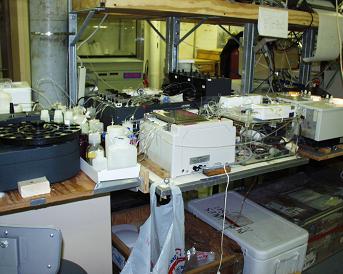
Dale Hubbard measures nutrients with this set up. |
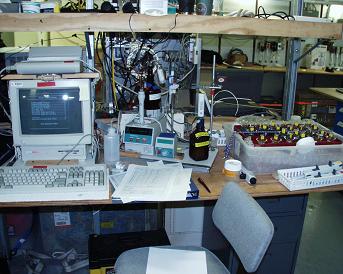
Joe Jennings measures dissolved oxygen at this workstation. |
The following things can make up Baffin Bay’s fingerprint. The fingerprint then points to something interesting about the water, and hopefully, to how the ocean works. The scientists are like detectives, looking for very small clues to help them figure out how the water is flowing in Baffin Bay, and in our oceans. |
| Salt and temperature: these give Baffin Bay waters many layers. Fresher water stays on top and salty water sinks. Warmer water floats on top of colder water.
Barium: this tells us the ocean has lots of fresh water from the Mackenzie River area in Canada
Radioactive forms of Cesium and Iodine: these chemicals get into the water near nuclear fuel plants. Finding them tells us the water has been near these places, and then we can know how long it takes the water to travel from one place (Northern England) to another (Baffin Bay). With enough of these clues, scientists can also tell what pathway the water took.
CFC’s (chlorofluorocarbons): these are in the air when people use Styrofoam, air conditioners, and sprays. Ocean waters absorb them, so if these CFC’s are in the water sample, we know when the water was last in contact with the air, and this tells us how and where the water is traveling.
Nutrients such as silicate, phosphate, and nitrogen: these give us clues to the living things in the water, especially phytoplankton (tiny plants) and zooplankton (tiny animals that eat the tiny plants) that need these nutrients.
Regular oxygen, 02, does the same thing. Phytoplankton (like all plants) gives off oxygen as they live. Bacteria (like all animals) use the 02 to help them live. Shallow water has more 02. Deep water has less.
Heavy forms of fresh water and light forms of fresh water (this is tricky). Chemically, water gets lighter the more times it evaporates. Scientists know that lighter freshwater in Baffin Bay comes from rivers and glaciers. Heavier freshwater comes from melting sea ice.
Carbon Dioxide, CO2: This will tells how much carbon dioxide in the water comes from people, animals, and river water. Very special tests can help us understand how much CO2 people bring in.
Cadmium. Cadmium behaves like phosphorous, and phosphorous tells a scientist whether the water is from the Pacific Ocean or Atlantic. |
| These are some of the chemical tools in a scientists’ toolbox. The tools help them find clues. The more clues scientists can discover, the more they can understand how the ocean works. The more we know about the oceans, the better we can care for our planet. |
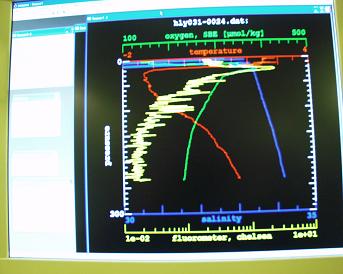
Scientists can get instant information about salt, temperature, and oxygen from this computer screen. It is attached to sensors in the ocean. |
|
